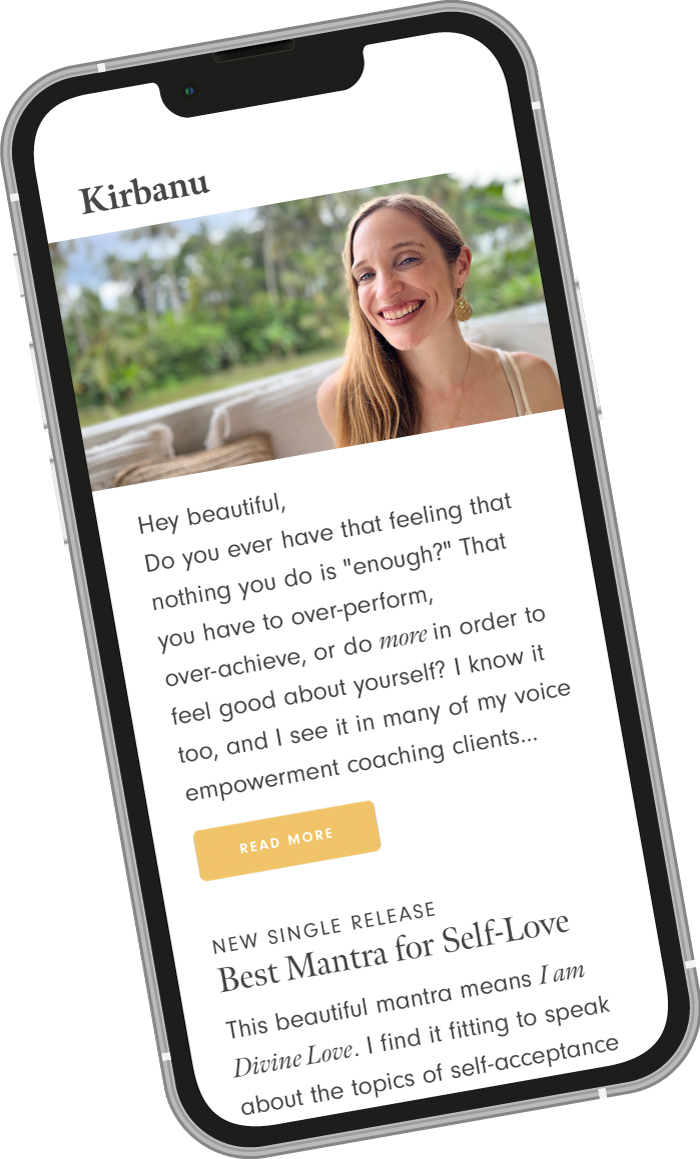A Journey into Vibrational Medicine
What is Sound Healing?
In today’s fast-paced world, many people are turning to ancient practices that promise harmony and healing. One such practice is sound healing. But what is sound healing? Let’s explore the world of vibrational medicine and discover how sound can help us relax, heal, and take care of ourselves.
Sound healing can involve using one or more instruments, including gongs, singing bowls, chimes, tuning forks and the human voice, to create resonant frequencies. These auditory and vibrational experiences can enhance both physical well-being and emotional health. The idea is to “bathe” in these sounds, which is why sound healing sessions are often called sound baths. During these sessions, participants are surrounded by sounds designed to help them relax deeply and heal.
What is the History of Sound Healing?
Sound healing has deep historical roots across different cultures. Ancient civilizations like the Egyptians, Greeks, and Indigenous peoples of the Americas and Australia used sound for its therapeutic benefits. In Hindu culture, mantras were (and still are) chanted to invoke spiritual energies and promote mental clarity. The Greeks used music to treat mental disorders, while the Chinese used gongs to restore harmony within the body.
In modern times, sound healing combines ancient wisdom with scientific understanding. Pioneers like Pythagoras explored how sound frequencies work, laying the groundwork for modern sound therapy. Today, sound therapists mix these ancient practices with new scientific research to create powerful healing methods.
What is a Sound Bath?
Sound healing sessions, often called sound baths, immerse participants in a sea of sound. Typically, participants lie down on a yoga mat or meditation carpet in a cozy and comfortable setting. The sound therapist might provide items like eye masks, neck pillows, cushions, or blankets to help you relax.
In the session, the therapist assists you in concentrating on a variety of sounds created by instruments such as:
- Monochords
- Crystal singing bowls (crafted from crystal or glass)
- Himalayan singing bowls (forged from metal)
- Shruti boxes (small instruments with reeds operated by bellows)
- Gongs (sessions with only gongs)
- Vocalisation (using the human voice for over toning and/or chanting)
These sounds might not be melodious like traditional music, but they create specific vibrations that resonate with your body. You may feel the vibrations and hear them as well during a sound healing session.
Curious? Why not take 5 minutes to explore the idea of sound healing. Find a comfortable seat for yourself, or lie down. Take a few deep breaths. Close your eyes and let the sound waves of this consciously crafted mantra serenade you into a state of ease and calm.
Sound healing can be a deeply immersive experience, and it’s common to feel a range of emotions during a session. You might feel joyful, sad, or even have intense memories surface. It’s also normal to cry during a session, which can be a cathartic release. The objective is to attain a deeper level of consciousness by disconnecting from external distractions and focusing inward..
The science behind sound healing lies in how sound impacts us at a fundamental level. Research indicates that sounds are composed of vibrations that affect us at the cellular level, influencing functions of the brain, nerves, muscles, and organs. Imagine how a loud car horn can startle you, while a gentle lullaby can soothe you to sleep.
These reactions occur because of changes in our brain and body. Sound healing uses these kinds of sound vibrations to help us relax and feel better. Studies show that sound therapy can change our brain waves, making us feel calmer.
The time spent in lower brain waves states, such as Alpha and Theta states, also activates the body’s healing and restoration. Thus sound healing can be incredibly beneficial for us on all levels of our being: physical, emotional, mental and spiritual.
What Does Sound Healing Do?
Research and personal experiences suggest many benefits of sound healing. Here are some primary benefits:
1. Alleviates Stress and Anxiety: Sound healing has been shown to notably decrease levels of stress and anxiety.
2. Enhances Sleep Quality: Consistent participation in sound healing sessions can enhance sleep quality by diminishing stress and fostering relaxation. The calming sounds can quiet the mind, facilitating easier and more restful sleep.
3. Alleviates Physical Pain: Sound vibrations can positively impact chronic pain conditions. The frequencies utilized in sound healing can prompt the body to release nitric oxide, a compound known to alleviate pain and inflammation.
4. Boosts Cognitive Function: Sound healing has been found to enhance cognitive functions such as memory, focus, and problem-solving skills by promoting a balanced brainwave state.
Align & Thrive! Free Call
Learn techniques to help you break free from limiting habits, thoughts and beliefs, to navigate life with greater ease, in alignment with your goals and wishes!
How to Use Sound Healing in Daily Life
Adding sound healing to your daily routine doesn’t demand intricate arrangements or extensive expertise. Here are some practical ways to use sound healing:
1. Morning or Evening Rituals: Start or end your day with a few minutes of sound healing. Utilize a singing bowl, chimes, or engage in simple humming to ground yourself and encourage relaxation.
2. Practice Mindful Listening: Dedicate a few minutes daily to listening to soothing music or natural sounds. This routine aids in stress reduction and enhances overall mood.
3. Guided Sound Meditation: Explore online platforms offering guided sound meditations. Many sessions blend sound healing with mindfulness techniques, creating an accessible starting point for beginners.
4. Personal Instruments: Invest in a small sound healing instrument like a tuning fork or a crystal singing bowl. Incorporate it into your meditation or yoga sessions to enhance your practice.
5. Sound Healing Apps: Several mobile apps provide sound healing experiences. These apps offer a range of frequencies and guided sessions tailored to specific needs like sleep, relaxation, or focus.
5 Tips for Beginners in Sound Healing
Starting with sound healing can be an enriching experience. Here are five tips to help you on your journey:
1. Explore Different Instruments: Experiment with various sound healing instruments like gongs, singing bowls, and tuning forks to find what resonates with you. Each instrument offers a unique vibrational experience.
2. Find a Qualified Practitioner: Attend a session with a certified sound healing practitioner. A guided session can help you understand the process and experience the full benefits of sound healing.
3. Create a Calm Environment: Whether at home or attending a session, ensure your environment is quiet and comfortable. Use eye masks, cushions, or blankets to enhance your relaxation.
4. Stay Open-Minded: Sound healing is a personal journey. You may encounter various emotions, spanning from joy to sadness. Permit yourself to acknowledge and navigate these emotions without criticism.
5. Maintain a Regular Practice: Consistent engagement is crucial. Over time, you’ll likely notice significant benefits.
Does Sound Healing Actually Work?
The effectiveness of sound healing is supported by both scientific research and centuries of anecdotal evidence. Studies have shown that sound healing can positively impact brainwave activity, reduce stress hormones, and promote physical and emotional well-being. Though individual experiences may differ, the expanding body of evidence indicates that sound healing can serve as a potent tool for improving overall health.
Other potential benefits of sound healing include:
- Stress reduction
- Increase in concentration
- Releasing emotional blockages
- Reduce tension
- Relieve headaches
- Pain relief even with pre-existing conditions
- Creating inner harmony and balance
- Activate self-healing powers
- Reduce fears
- Alleviating the effects of depression, attachment disorders and burnout
Align & Thrive! Free Call
Learn techniques to help you break free from limiting habits, thoughts and beliefs, to navigate life with greater ease, in alignment with your goals and wishes!
Jumping into Sound Baths
If you’re intrigued by the idea of sound baths, don’t hesitate to jump in! Sound baths may provide a distinctive and profound avenue to encounter the therapeutic influence of sound. Find a local practitioner or explore online options to get started. Whether you’re seeking relaxation, emotional release, or a deeper connection with yourself, sound baths can provide a transformative experience.
Sound healing is a beautiful, ancient practice that has found a place in modern wellness. Through harnessing the potency of sound vibrations, we can foster healing, relaxation, and holistic well-being. Why not embrace the opportunity and allow the soothing sounds to envelop you?
Insights from Sound Healer: Eliza Neo
In a recent interview on the Express Yourself podcast, sound healer Eliza Neo shared her journey and insights into the world of sound healing. Eliza, a Berlin-born yoga teacher, sound healer, meditation guide, and breathing coach, discussed how her background in music and her experiences with meditation led her to integrate sound healing into her practice.
Eliza’s journey began with a deep connection to music, starting with playing the violin at the age of four and the piano at six. She described how her early passion for music evolved into a profound exploration of sound as a tool for healing and transformation. Eliza emphasized the importance of feeling the vibrations and frequencies within the body, highlighting how sound healing helps individuals connect with their physical and emotional selves on a deeper level.
Through her work, Eliza has witnessed the transformative power of sound healing in her clients. She recounted moments when people experienced profound emotional releases during sound healing sessions, allowing them to process and let go of long-held emotions and traumas. This process, she explained, helps individuals shift from the thinking mind to the feeling heart, promoting a sense of inner peace and balance.
Practical Tips from the Podcast
Eliza shared several practical tips for those interested in exploring sound healing:
- Start with Simple Instruments: Begin with accessible instruments like singing bowls or chimes. These can be easily incorporated into your meditation or yoga practice.
- Combine Practices: Integrate sound healing with other mindfulness practices like yin yoga or breathwork. This combination can enhance the overall therapeutic effect.
- Establish a Sacred Space: Designate a special area for your sound healing ritual.
- Listen to Your Body: Pay attention to how your body responds to different sounds and vibrations.
- Be Patient: Sound healing is a journey that unfolds over time. Give yourself time and allow the practice to develop naturally.
Eliza’s perspectives emphasize the transformative capacity of sound healing. By integrating these methods into your everyday routine, you can foster a deeper connection with yourself and reap the profound rewards of this age-old healing modality.
Ultimately, sound healing stands as a potent and attainable approach to enriching your holistic well-being.
Podcast Episode #28 – Listen with your whole body
Stay in Touch with Eliza
Want to learn more about sound healing, yin yoga, meditation and coming home to yourself using the beautiful tools Eliza shares? Then get in touch with her via her website, podcast or contact her on Instagram. She’d love to connect with you there!
- Eliza’s Podcast: https://www.elizaneo.com/stories?category=podcast
- Eliza’s Website: https://www.elizaneo.com
- Eliza on Instagram: @Iamelizaneo




